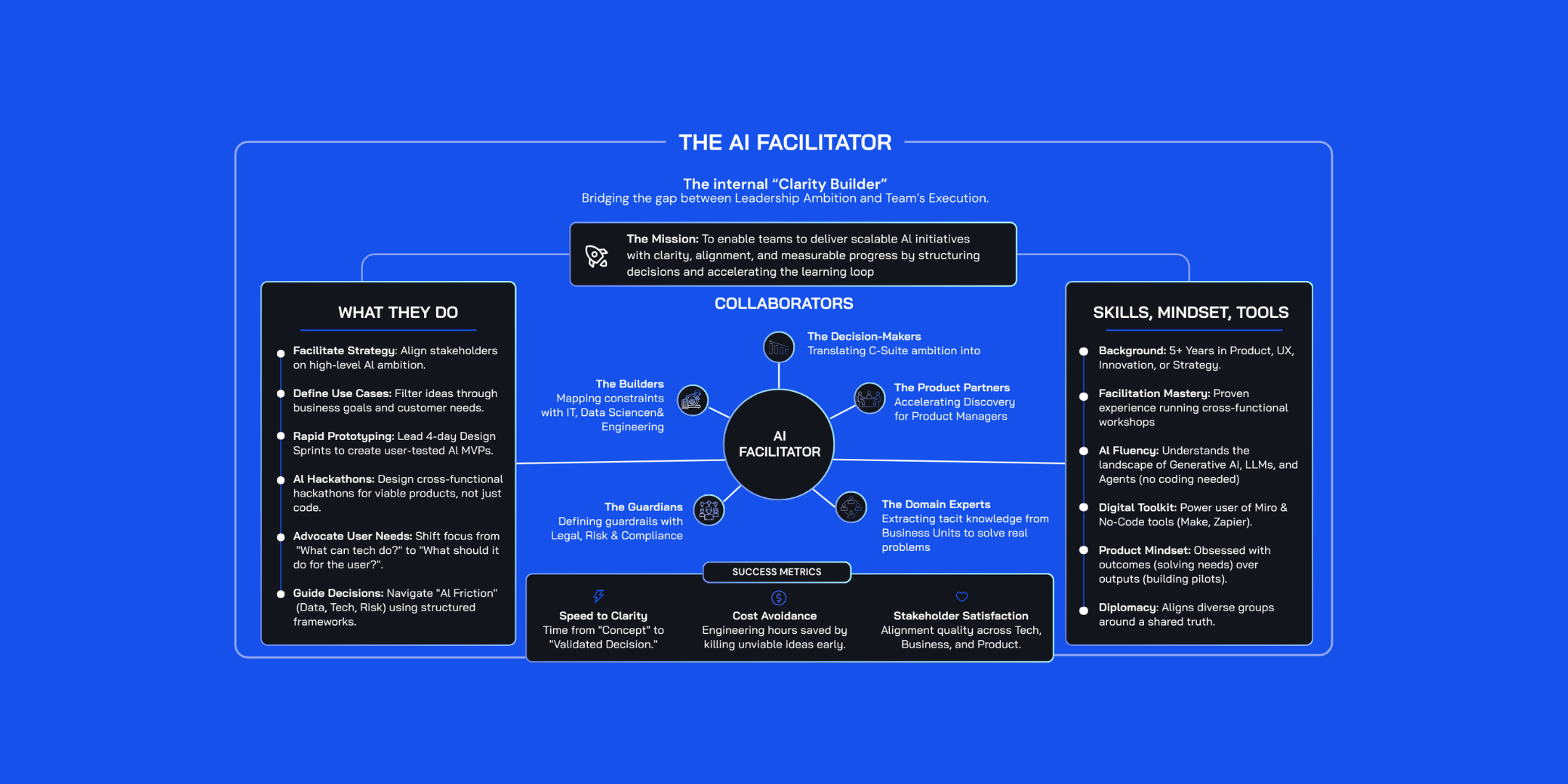AI Design Sprints vs. AI-powered Design Sprints. What's the Difference?

When it comes to the world of AI and Design Sprints, there's a lot of buzz around two concepts: AI Design Sprints and AI-powered Design Sprints. You might have come across these terms, but let's break them down in plain language, the way we understand them.
AI Design Sprints
AI Design Sprints are like the specialist doctors of the tech world. They’re all about creating something new and innovative with AI at its heart. Think of it as building a product where AI isn't just a feature, it's the main character.
An AI Design Sprint is a structured problem-solving process that combines the traditional Design Sprint with AI expertise to help teams identify, prototype, and test AI-powered solutions.
Key Characteristics of AI Design Sprints:
- AI-Centric Objective: The primary goal is to create solutions where AI is not just a feature, but the main functionality.
- Expert Involvement: These sprints bring together AI experts like data scientists and AI engineers, ensuring the product is viable and leveraging the full potential of AI.
- Innovative Outcomes: The output often includes groundbreaking AI-driven prototypes, a comprehensive value proposition, and a development roadmap focused on AI technology.
AI-Powered Design Sprints
On the other hand, AI-powered Design Sprints use AI as a tool to augment the traditional design sprint process. It is like having a Swiss Army knife in your design process. Facilitators and teams use AI as a tool to make everything smarter, faster, and maybe even a bit more creative.
Key Characteristics of AI-Powered Design Sprints:
- Prototyping Speed: AI tools and techniques are used to enhance prototyping.
- Efficiency: By leveraging AI, teams can speed up certain activities, generate new insights, and better organize information (like user research, the Sprint Brief, the Replay Report)
- Introduce new perspectives: AI's global data access opens up new viewpoints, filling gaps in the sprint team’s perspectives. This is particularly valuable in areas where specific expertise, like Legal or HR, is absent or needs reinforcement.
The core difference between the two lies in their purpose and application. AI Design Sprints are about building AI-driven solutions from the ground up, making AI the star of the show. These sprints require a deep understanding of AI’s capabilities and limitations, and they often result in products that could revolutionize how we interact with technology.
AI-powered Design Sprints, in contrast, are more about the journey than the destination. They leverage AI to enhance the creative process, making the journey from concept to prototype faster, more efficient, and perhaps even more creative. They are not limited to AI-centric projects and can be applied to a broad spectrum of design challenges.
Check out our Webinar for the full story:
Wrapping It Up
Everyone's dipping their toes in the AI pool, figuring out the dos and don'ts, the whens and hows of using AI. Let's be honest, none of us have all the answers. We're learners on this journey, picking up bits and pieces along the way.
But here's the thing: just because we're experimenting doesn't mean we can't be smart about it. We don't have to fly blind. There are a few nuggets of wisdom, some guiding principles, if you will, that can steer our experiments in the right direction.
- Understand AI's Potential: Recognize the capabilities of AI and how it can be integrated into products and services. This involves matching AI solutions with the right problem and use case.
- Diverse Team Composition: Include a mix of professionals in your design sprints, such as AI experts (data scientists, AI engineers), alongside domain experts from sales, marketing, design, etc. This approach ensures a comprehensive perspective on problem-solving.
- Balance AI with Human Creativity: While leveraging AI for efficiency and innovation, it's crucial to maintain a balance with human creativity and insight, ensuring that AI complements rather than replaces human ideation.
- Customer-Centric Approach: Focus on creating solutions with the user at the core. This involves understanding customer needs and contexts.
- Align with Business Objectives: Ensure that the AI solutions align with business goals and add value to the organization.
Inspired to get started with design sprints? Have some questions? Ask our AI Design Sprint Master GPT! Get the link here and dive in!




.jpg)





